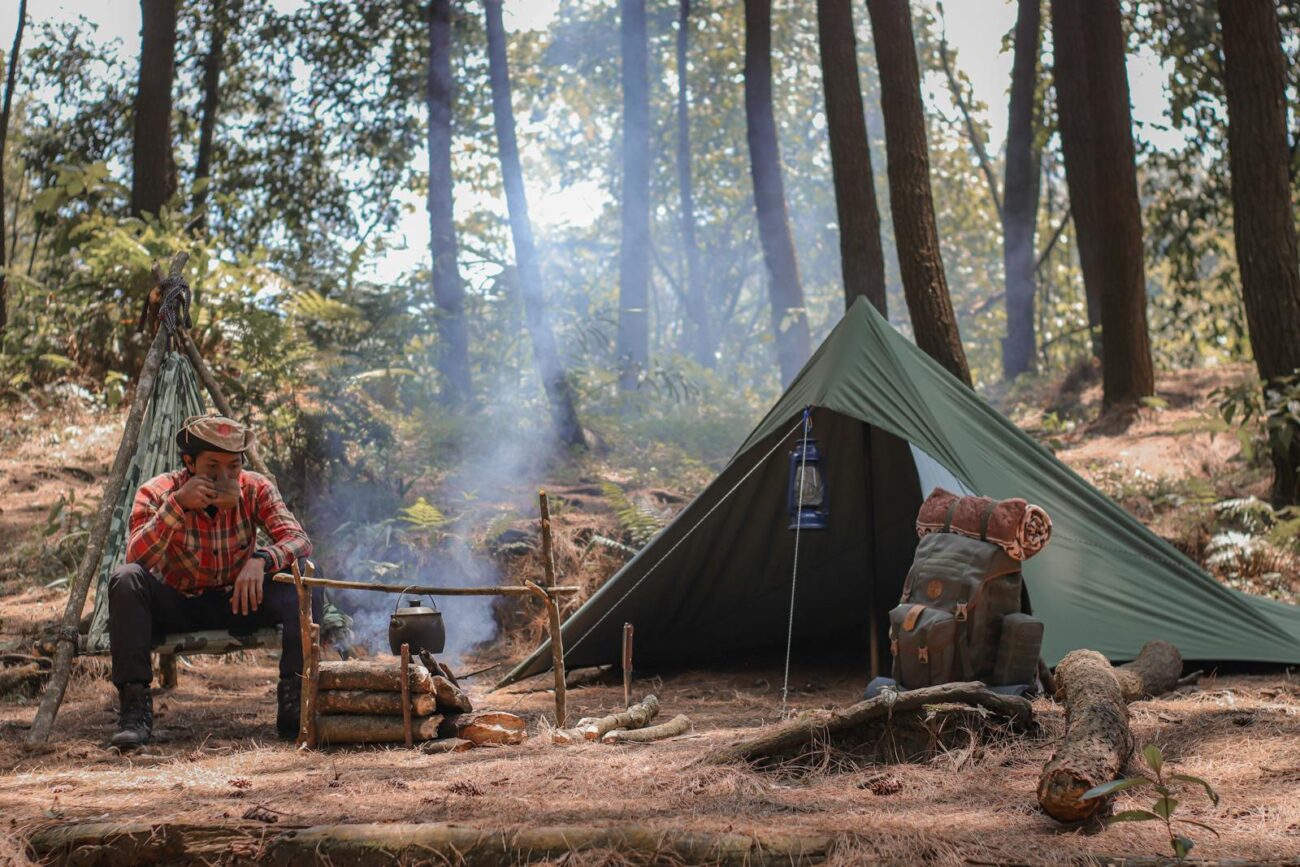When venturing into the great outdoors, few things are as rewarding as enjoying a delicious meal under the open sky after a day of adventure. However, cooking in the wilderness presents unique challenges that don’t exist in your home kitchen. Limited supplies, basic equipment, and the absence of running water can make meal preparation and cleanup seem daunting. Fortunately, with some clever camp kitchen hacks, you can prepare satisfying meals and maintain cleanliness with minimal fuss. This guide will walk you through practical strategies for efficient outdoor cooking, from meal planning and preparation to cleanup techniques that leave no trace on the environment while maximizing your enjoyment of nature.
Planning Meals for Maximum Efficiency
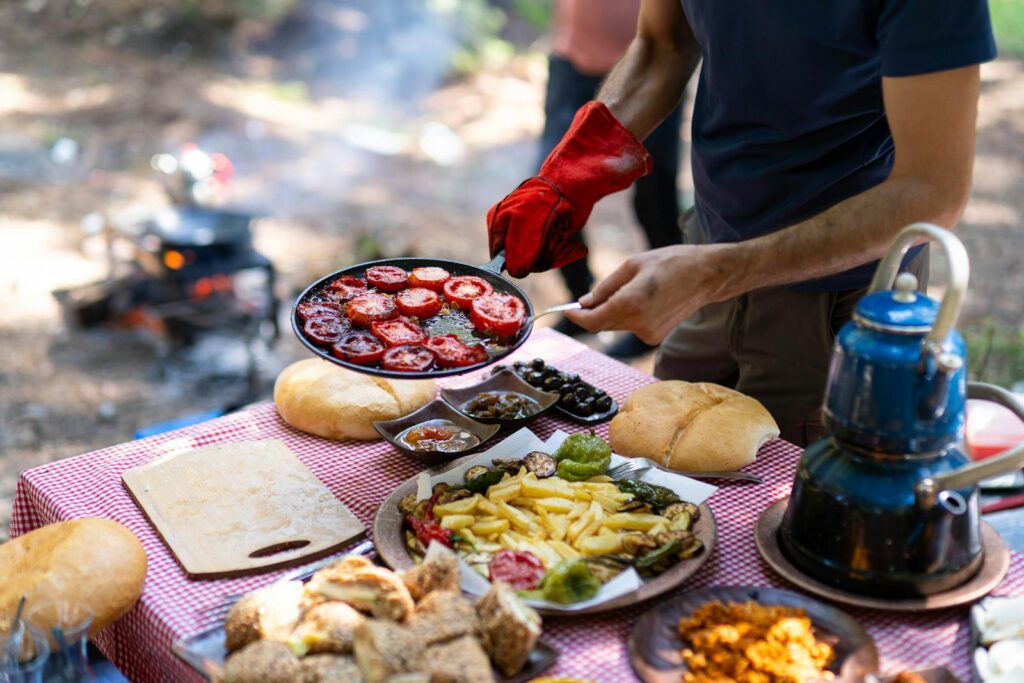
The foundation of successful camp cooking begins long before you reach your destination. Start by planning a menu that balances nutrition, simplicity, and minimal waste. Consider one-pot meals that reduce the number of cooking vessels and utensils you’ll need to clean. Pre-measure and pack ingredients in reusable containers or zip-top bags, labeling them by meal to eliminate guesswork at the campsite. For multi-day trips, plan to use perishable ingredients early, saving longer-lasting foods for later days. This careful planning not only simplifies your cooking process but also reduces food waste and minimizes the weight you’ll need to carry, making your entire camping experience more enjoyable.
Essential Camp Kitchen Gear
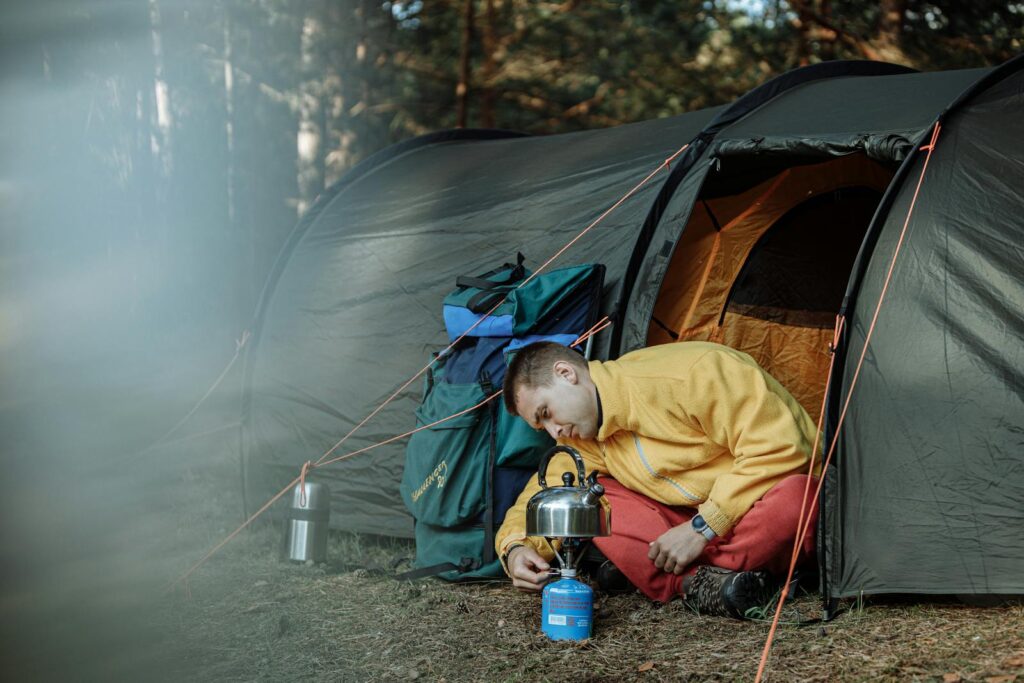
Investing in the right compact cooking equipment can dramatically improve your wilderness culinary experience. A lightweight camp stove with fuel appropriate for your destination is fundamental, along with a versatile pot set that nests together for space efficiency. Consider multipurpose tools like a knife that can handle various cutting tasks or a spork that eliminates the need for separate utensils. Collapsible items such as silicone bowls, measuring cups, and even kettles have revolutionized camp kitchens by saving precious pack space. While it might be tempting to bring every gadget, prioritize items that serve multiple functions and are durable enough to withstand outdoor conditions. Remember that every ounce counts when you’re carrying your kitchen on your back, so choose quality items that balance weight with functionality.
The Magic of Foil Packet Cooking
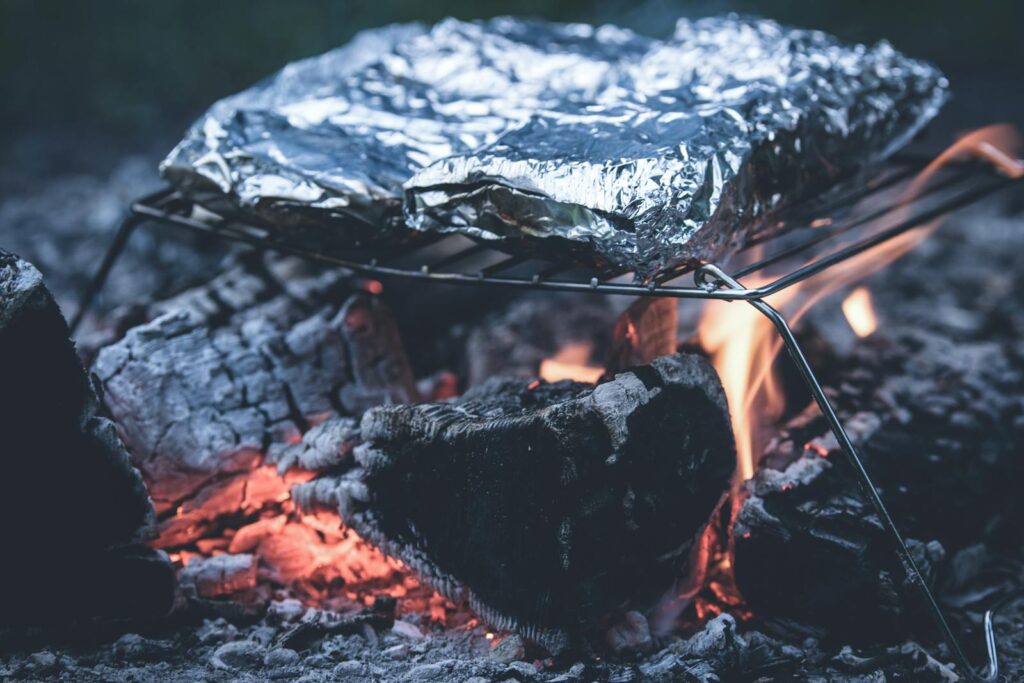
Foil packet cooking stands as one of the most versatile and cleanup-friendly methods for wilderness meal preparation. This technique involves wrapping combinations of proteins, vegetables, and seasonings in heavy-duty aluminum foil and cooking them directly in hot coals or on a grill grate. The beauty of foil packets lies in their versatility—they can accommodate everything from fish and chicken to vegetarian options with equal success. Each camper can customize their packet according to personal preferences, making this method perfect for groups with varying tastes. The sealed environment creates a natural steaming effect that keeps food moist while infusing it with flavor. Best of all, when dinner is finished, simply crumple the foil for disposal, leaving you with virtually no cleanup beyond washing your eating utensils.
One-Pot Wonders for Simplified Cooking
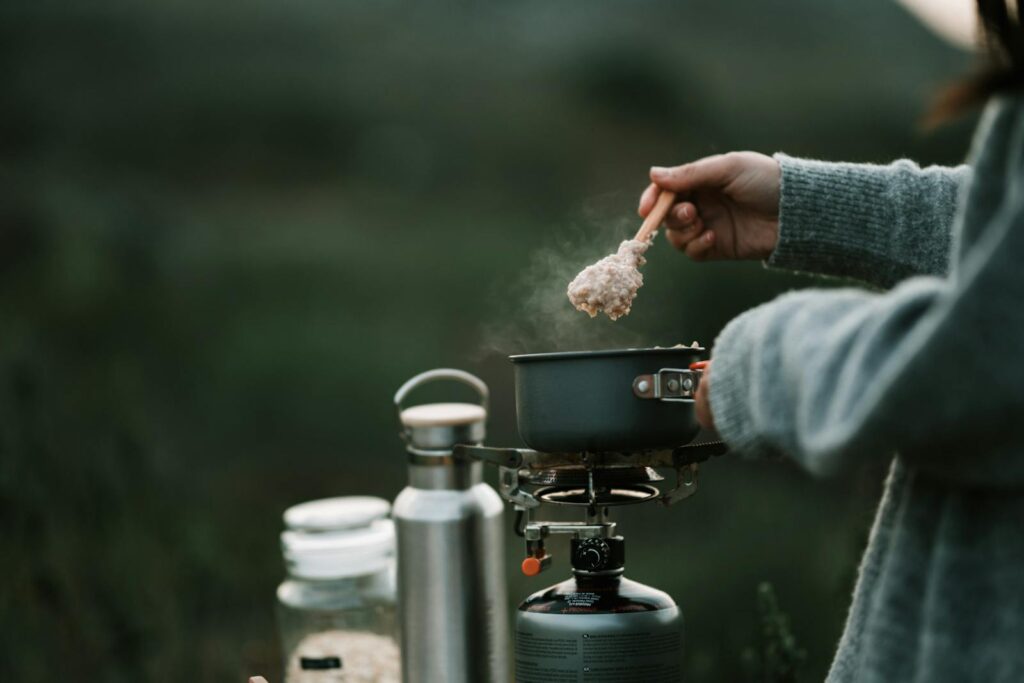
One-pot meals are the cornerstone of efficient camp cooking, offering complete nutrition with minimal equipment and cleanup. Dishes like chili, pasta with sauce, curries, and hearty stews can be prepared in a single vessel while delivering satisfying flavor and balanced nutrition. The key to successful one-pot cooking lies in understanding proper ingredient sequencing—adding items according to their cooking times ensures everything finishes simultaneously without overcooking. Experiment with shelf-stable ingredients like dried mushrooms, sun-dried tomatoes, and powdered coconut milk that can add depth of flavor without requiring refrigeration. Many experienced campers prepare a one-pot meal large enough to provide leftovers for lunch the next day, further reducing cooking frequency. For extra efficiency, consider lining your pot with a cooking bag designed for high temperatures, which can make cleanup as simple as removing and disposing of the liner.
Breakfast Shortcuts Worth Knowing
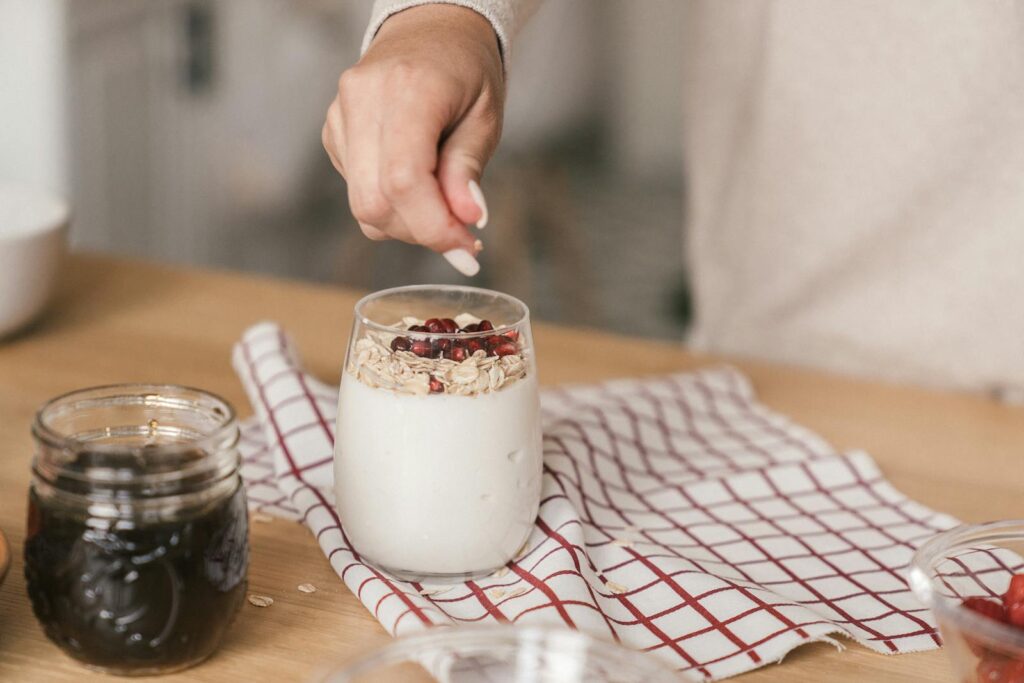
Mornings at camp often call for quick, energizing meals that don’t demand elaborate preparation when you’re eager to start the day’s adventures. Overnight oats prepared before bed require zero morning cooking—simply combine oats with milk or water, add dried fruits, nuts, and sweetener, then let them soak overnight for a ready-to-eat breakfast. For hot breakfast enthusiasts, premix dry ingredients for pancakes at home and store them in a bottle where you can add water, shake, and pour directly onto your heated pan. Breakfast burritos can be fully assembled at home, wrapped in foil, and either kept cool to cook on your first morning or frozen for later in your trip. Even sophisticated options like frittatas become simple when pre-chopped ingredients are combined in a zip-top bag at home, ready to be poured into a hot pan at camp. These shortcuts not only save precious morning time but also minimize the mental energy required before your first cup of camp coffee.
Clever Meal Prep Techniques
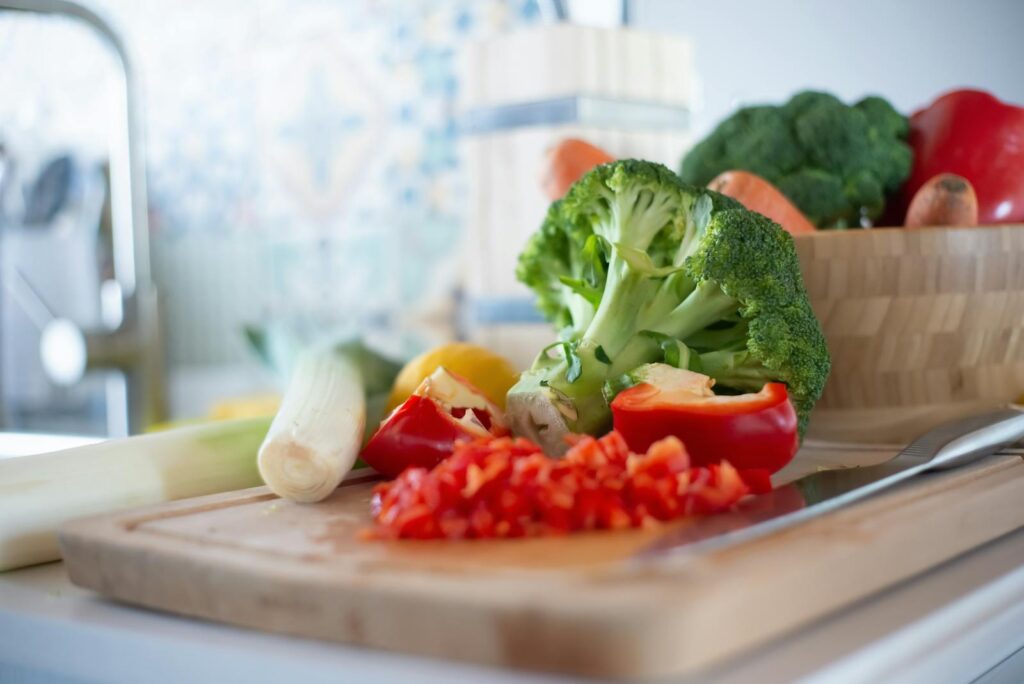
Strategic meal preparation before your camping trip can dramatically reduce the complexity of wilderness cooking while elevating the quality of your meals. Consider par-cooking rice, beans, or other grains that require long cooking times, then finishing them at camp with far less fuel and time. Pre-chop vegetables and store them in containers according to which meals they’ll be used for, reducing the need for extensive knife work in the field. Marinades can transform simple proteins when meat is placed in the marinade before freezing, allowing it to absorb flavors as it thaws in your cooler. For the ultimate convenience, some dishes like stews, chili, and certain curries can be fully cooked at home, then frozen flat in freezer bags to serve as ice blocks in your cooler before being reheated at camp. This technique not only saves cooking time but also extends your cooler’s effectiveness while ensuring you enjoy home-cooked quality in remote locations.
Water Conservation Strategies
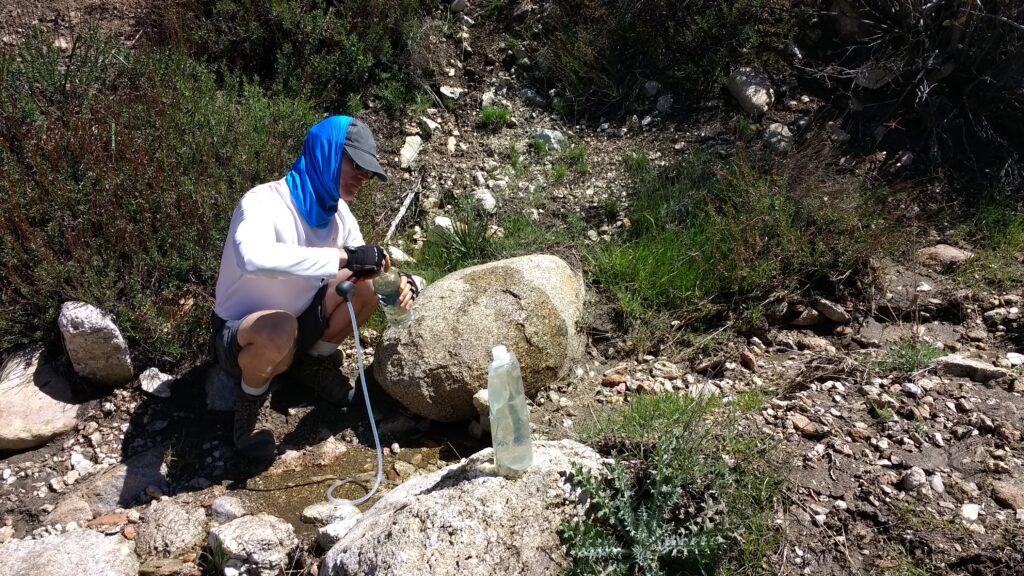
Water management presents one of the biggest challenges in wilderness cooking, particularly in areas where this precious resource must be carried or filtered. Implement a progressive water usage system where clean water is used first for drinking and cooking, then slightly used water (like pasta water) is repurposed for tasks like pre-rinsing dishes. Consider one-pot meals that create their own sauces, eliminating the need for draining valuable water. When planning meals, favor recipes that require minimal water for preparation and cooking, avoiding water-intensive foods like dried beans unless they’re pre-cooked at home. For cleanup, use biodegradable soap extremely sparingly, applying it to a cloth rather than directly to dishes to minimize the amount needed. Some experienced backcountry cooks even plan meals in a specific sequence where each pot gets progressively “dirtier” throughout the day, reducing the number of times dishes need thorough cleaning. By treating water as the precious resource it is, you’ll not only lighten your load but also practice responsible environmental stewardship.
Leave-No-Trace Dishwashing Techniques
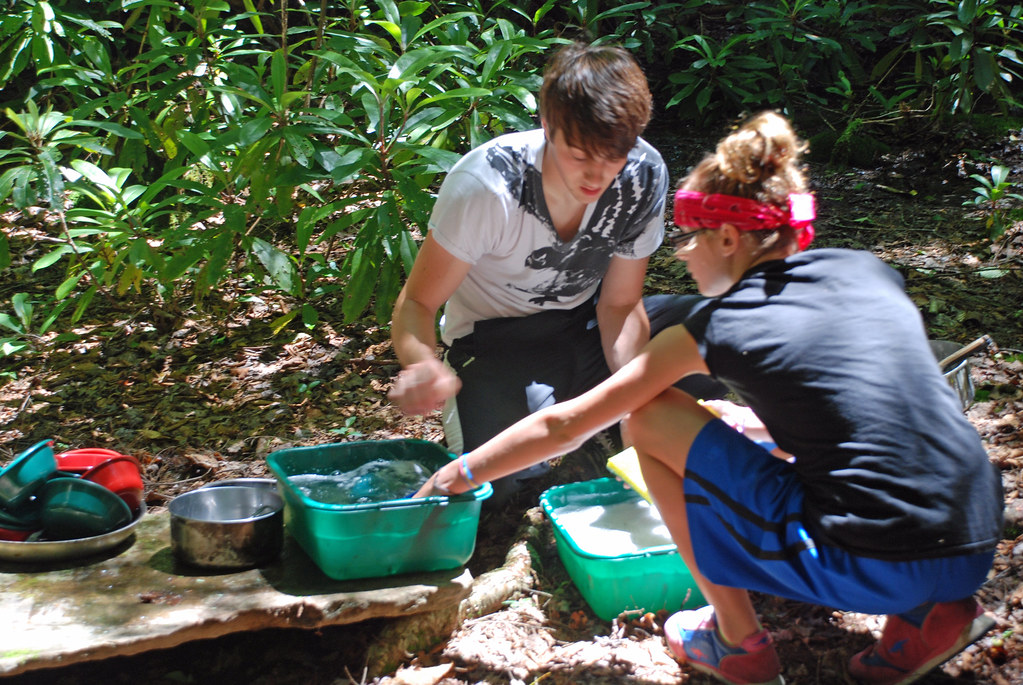
Proper dishwashing in the wilderness follows principles that protect natural water sources while still achieving hygienic results. Begin by scraping food particles from dishes into your trash or dedicated food waste container, never disposing of food waste in water sources. Set up a three-container washing system: the first for removing food residue with hot water, the second for washing with biodegradable soap, and the third for rinsing with clean water, ideally with a few drops of sanitizer like bleach or water purification tablets. Always position your washing station at least 200 feet (about 70 paces) from any natural water source to prevent contamination. After washing, strain your dishwater through a fine mesh sieve to catch any remaining food particles for proper disposal, then broadcast the strained gray water over a wide area away from camp and water sources. This system minimizes environmental impact while maintaining proper hygiene, striking the critical balance between cleanliness and conservation that defines responsible outdoor ethics.
Smart Food Storage Solutions
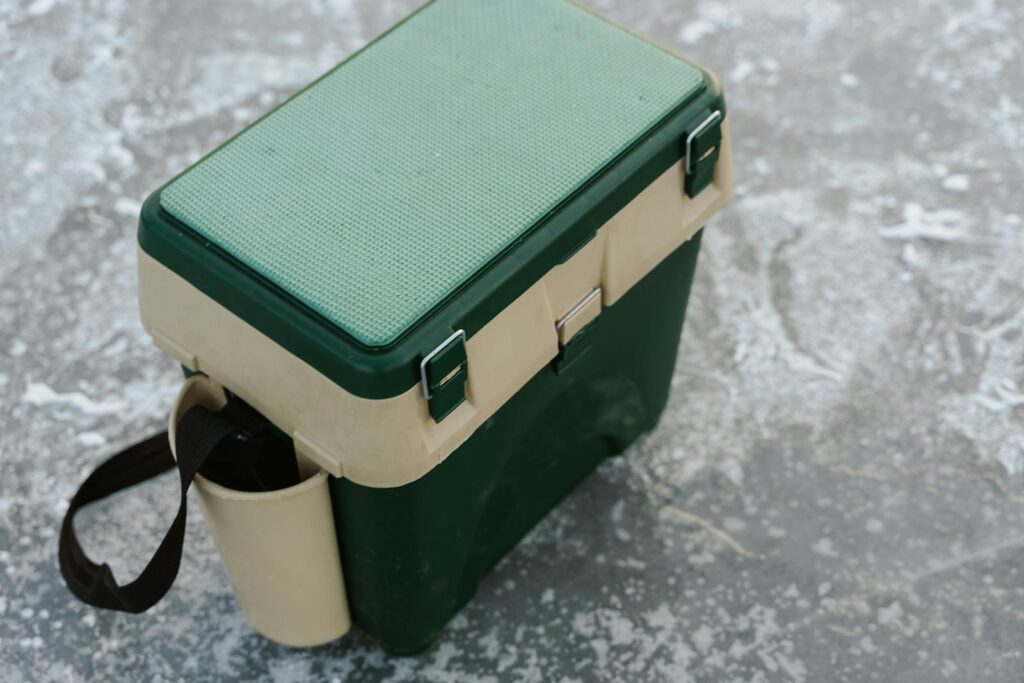
Proper food storage in the wilderness serves dual purposes—preventing attraction of wildlife and maintaining food quality throughout your trip. Utilize the “temperature gradient” principle by organizing your cooler with the most perishable items at the bottom where it’s coldest, keeping items like raw meat in waterproof containers to prevent cross-contamination if ice melts. Pre-chill your cooler before packing and use frozen water bottles or ice blocks rather than loose ice to extend cooling efficiency. For backcountry trips, consider lightweight vacuum-sealed options for perishables and transfer pantry items to silicone bags or lightweight containers to eliminate bulky packaging. In bear country, use approved bear canisters or hang food properly using the PCT (Pacific Crest Trail) method, suspending provisions at least 12 feet high and 6 feet from the trunk. Remember that proper food storage is not just about convenience—it’s an essential safety practice that protects both you and the wildlife whose habitat you’re visiting.
Campfire Cooking Mastery
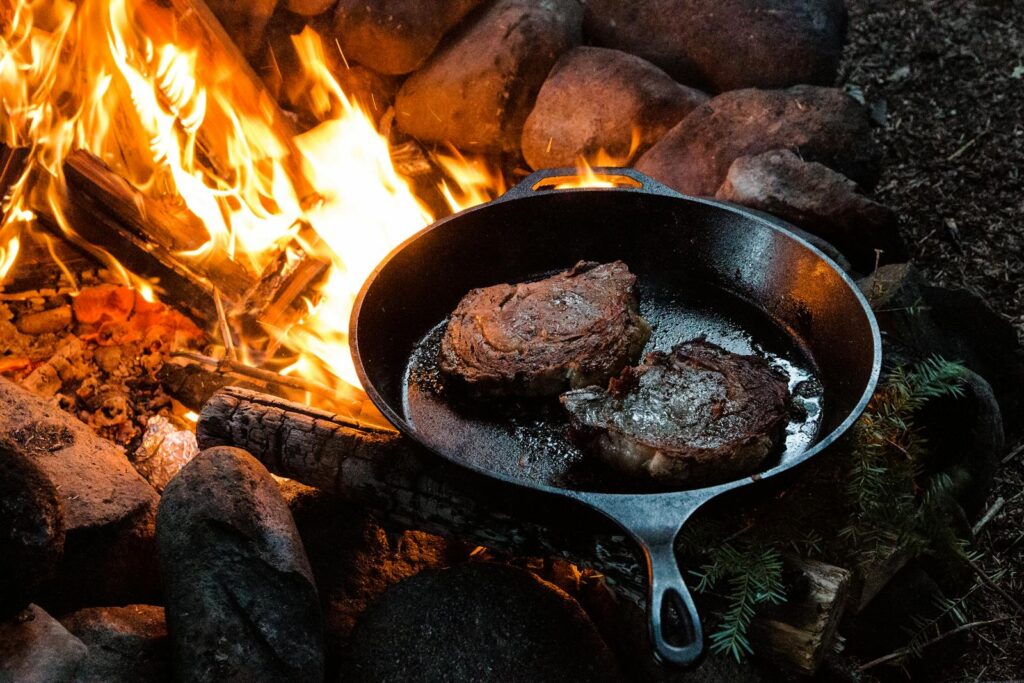
Cooking over an open fire represents one of the most rewarding yet challenging wilderness culinary techniques, requiring understanding of fire dynamics beyond simple flame production. Create cooking zones with varying heat levels by establishing a bed of hot coals at one side of your fire ring while maintaining active flames at the other, giving you simultaneous options for searing, simmering, and keeping food warm. Learn to recognize ideal cooking conditions—flames are too hot for most cooking, while glowing red coals provide the steady, intense heat needed for most campfire cookery. Elevate your techniques with methods like banking (surrounding a pot with hot coals for even heating), using a tripod for suspending pots at adjustable heights, or creating a stone reflecting wall that directs heat toward your cooking area. For baking, master the Dutch oven by placing coals both underneath and on the lid, creating an even oven-like environment capable of producing everything from bread to cobbler. Remember that successful campfire cooking requires patience and attention to the fire itself, which should be considered an ingredient rather than just a heat source.
Spice Kits and Flavor Enhancers
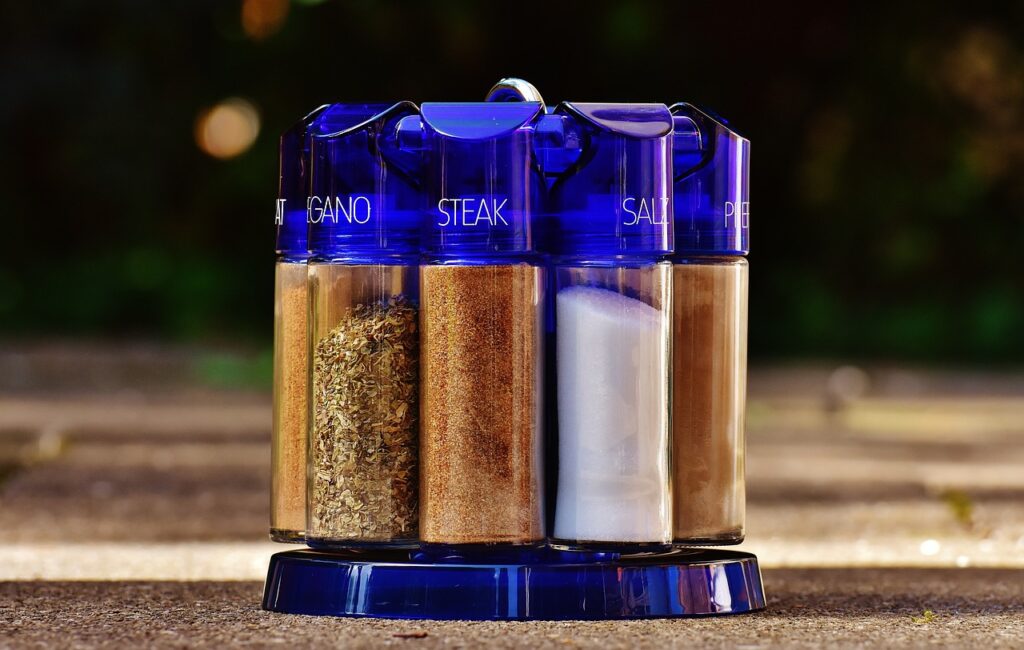
A well-designed portable spice kit can transform basic camp meals into memorable culinary experiences without adding significant weight to your pack. Repurpose small containers like pill organizers, contact lens cases, or straws sealed at both ends to carry pre-measured spice quantities tailored to your planned menu. Beyond basic salt and pepper, consider versatile flavor enhancers like smoked paprika, cumin, dried herbs, curry powder, and red pepper flakes that add dimension to simple dishes. Liquid flavor boosters like soy sauce, hot sauce, or olive oil can be transferred to leak-proof travel bottles, while bouillon cubes or paste provide instant flavor foundations for soups and one-pot meals. Don’t overlook the transformative power of shelf-stable ingredients like sun-dried tomatoes, dried mushrooms, or dehydrated caramelized onions that rehydrate during cooking to add complex flavors to wilderness meals. With thoughtful selection of these lightweight flavor enhancers, even the simplest camp staples like rice, pasta, or instant potatoes can become satisfying meals worth looking forward to after a day of outdoor activities.
No-Cook Meal Ideas

No-cook meals offer welcome relief from kitchen duties while still providing satisfying nutrition, particularly valuable during hot weather or when arriving at camp too tired for elaborate cooking. Wraps filled with shelf-stable ingredients like tortillas, hard cheeses, cured meats, and vegetables with long room-temperature viability create complete meals requiring zero heating. Cold-soaked grains like couscous or instant rice can be prepared by simply adding water and waiting 30 minutes, then mixing with olive oil, lemon juice packets, and pre-chopped vegetables for instant grain salads. For protein without cooking, consider options like tuna or salmon in pouches rather than cans, pre-cooked and shelf-stable Indian food packets, or protein-rich combinations of nuts, seeds, and jerky. Even complete nutrition can be achieved without heating through carefully planned “assembly meals” combining shelf-stable components like crackers, nut butters, dried fruits, and preserved proteins. By incorporating several no-cook options into your camping menu, you provide yourself flexibility for when conditions, energy levels, or fire restrictions make cooking impractical.
Adapting to Weather Challenges
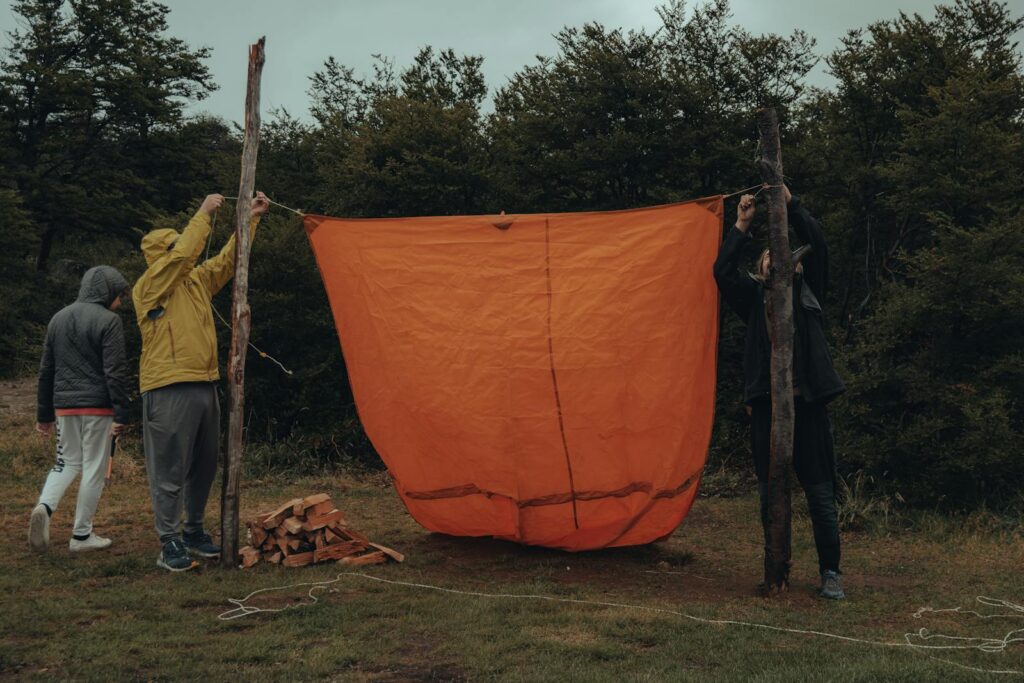
Weather variables demand flexible cooking strategies that can mean the difference between a satisfying meal and a hungry night in the wilderness. For rainy conditions, prepare by packing a lightweight tarp that can be strung above your cooking area, creating a dry workspace even during steady precipitation. Wind presents particular challenges for camp stoves, potentially extinguishing flames or dramatically increasing fuel consumption—counter this by creating a windbreak from natural features, your pack, or a purpose-made reflective windscreen that also helps direct heat toward your pot. Extreme heat might make cooking over fire uncomfortable, making morning and evening the ideal times for hot food preparation while focusing on no-cook options during peak heat. Conversely, in cold weather, you’ll need extra fuel for both cooking and possibly melting snow for water, making efficient one-pot meals particularly valuable. Weather-aware campers also prepare backup meal options that don’t require their primary cooking method—for instance, having no-cook alternatives if high winds make stove use dangerous, or simple-to-prepare options if unexpected storms force you to cook from within your tent vestibule.
Creative Uses for Common Camp Items

Resourcefulness with standard camping equipment can solve kitchen challenges without adding specialized gear to your pack. An empty water bottle can become a pancake batter dispenser when filled with premixed ingredients, allowing precise pouring directly onto your hot surface. Dental floss, particularly the unflavored variety, makes an excellent cutting tool for soft foods like cheese or cake when a knife isn’t practical. A bandana can serve multiple kitchen functions—from straining pasta water to improvising as a pot holder or even as a coffee filter in a pinch. Empty chip bags, thoroughly cleaned, can be repurposed as mixing bowls with their durable, waterproof interior, while their foil lining makes them useful for reflecting heat in improvised warming scenarios. Even your helmet or hat can become an emergency mixing bowl when other options aren’t available. These multifunctional approaches to camp equipment not only solve immediate problems but also reduce the weight and volume of specialized kitchen items in your pack, embodying the wilderness ethic of creative minimalism.
Desserts and Treats Worth the Effort
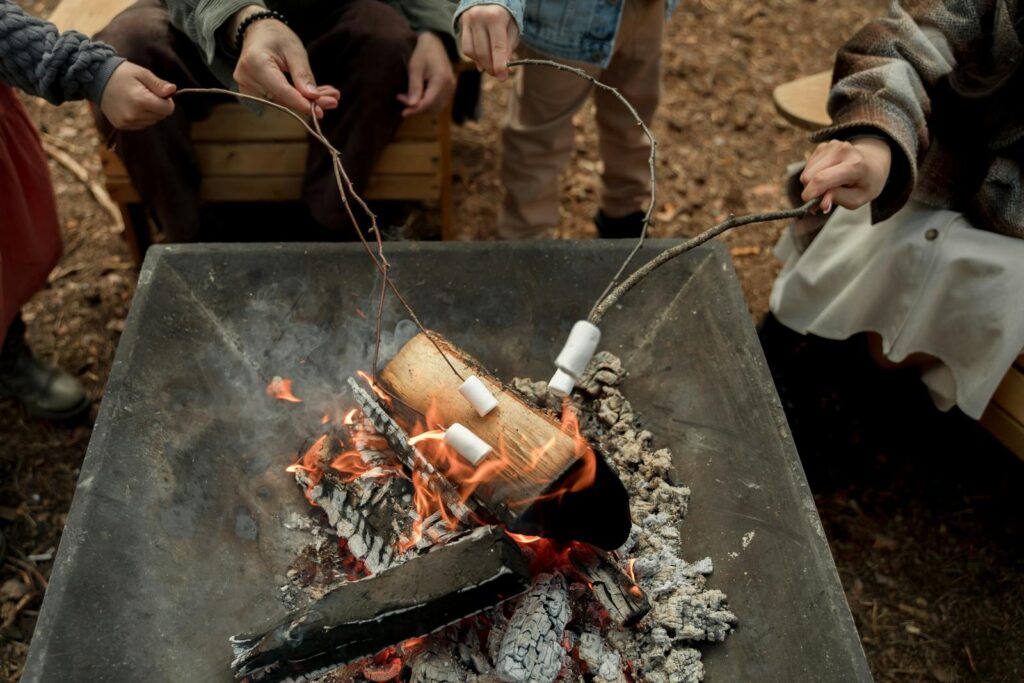
Camp desserts create memorable experiences that reward the day’s exertions while often being simpler than you might expect. S’mores remain the classic campfire treat, but consider elevating this standard by substituting ingredients like chocolate-hazelnut spread, caramel squares, or peanut butter cups for traditional chocolate bars. Dutch oven desserts like pineapple upside-down cake or cobbler become surprisingly manageable when using cake mix as a base, requiring minimal measuring while producing impressive results. For no-bake options, instant pudding mixed in a zip-top bag eliminates the need for bowls and can be eaten directly from the bag or squeezed onto graham crackers for instant pudding sandwiches. Bannock bread, a simple mixture of flour, baking powder, sugar, and water, can be wrapped around a stick and roasted over the fire for a warm, comforting treat requiring minimal ingredients and equipment. These wilderness desserts often become the most recalled aspects of camp meals, creating traditions that transform ordinary camping trips into cherished memories through the shared experience of enjoying something sweet under the stars.
The magic of camp cooking lies not in replicating home kitchen convenience but in embracing the unique challenges and rewards of outdoor food preparation. With thoughtful planning, multipurpose equipment, and clever techniques, you can create memorable meals that satisfy both hunger and the soul while maintaining environmental responsibility. The best camp cooks find joy in the process itself—the sizzle of food over a fire built by hand, the sharing of a meal against the backdrop of nature’s grandeur, and the satisfaction of efficiently managing resources in a simplified setting. By implementing these hacks for meal preparation and cleanup, you’ll spend less time on kitchen duties and more time enjoying the wilderness experiences that brought you outdoors in the first place. After all, camp cooking at its finest doesn’t just feed the body—it becomes an integral and cherished part of the outdoor adventure itself.

